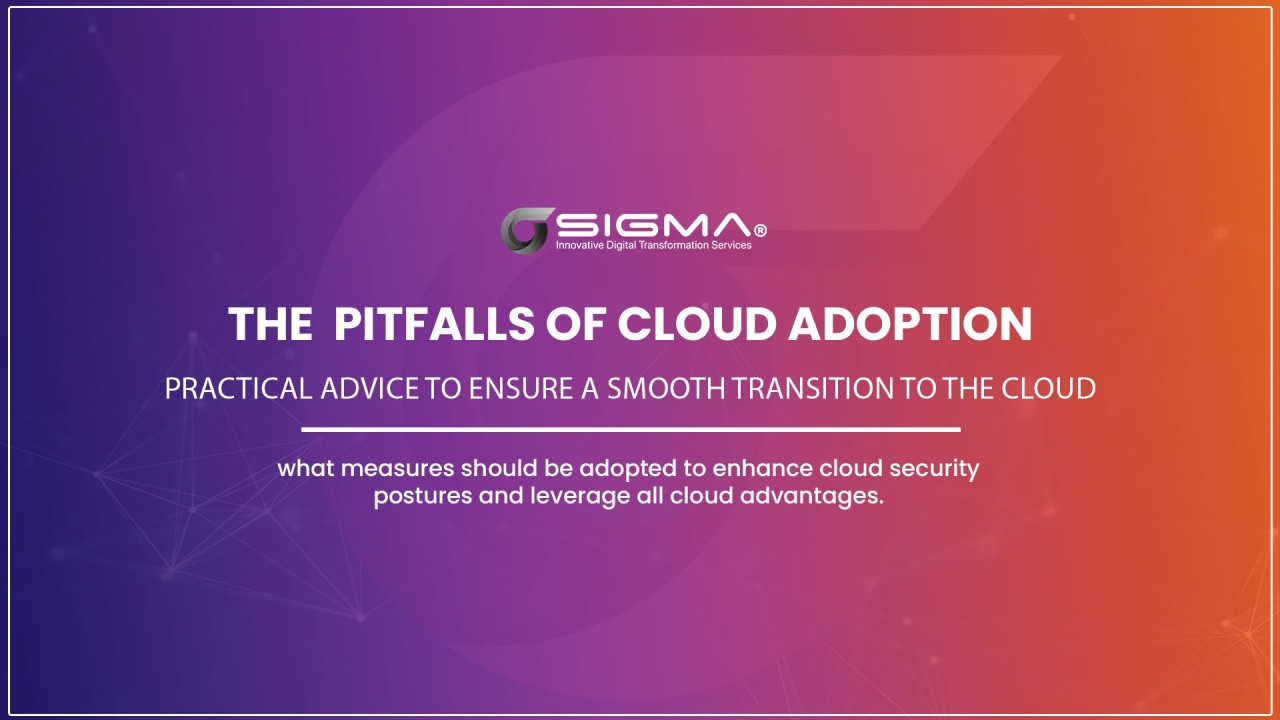
Cloud Adoption Pitfalls
Cloud computing is increasingly becoming the default choice for businesses due to its numerous advantages, such as cost reduction, improved service quality, and enhanced flexibility. Organizations recognize that leveraging cloud computing enables them to respond and recover more quickly, reimagine their existing operations, and reassess their business continuity strategies to stay competitive with their platforms, applications, and data.
Despite these benefits, several challenges and risks associated with cloud adoption have consistently emerged across various industries. Notably, most of these issues are not related to the core technologies enabling cloud computing. Instead, cloud computing often exposes vulnerabilities in an organization's IT policies and application architectures, which collectively threaten the cloud objectives and adoption efforts of key enterprises.
Below are some common pitfalls and strategies to overcome them:
1. Unexpected Cost Increases
Challenge: Cloud migration demands a substantial investment of time and resources, including access management, network redesign, and other technological expenditures. The cost of cloud computing also varies based on the cloud model a company selects for its business applications and workloads, each offering different features, costs, and benefits. Therefore, a company should not embark on a cloud migration journey without a comprehensive understanding of the costs and utilities associated with different cloud models.
Solutions:
2. Vendor Lock-In
Challenge: Vendor lock-in is a significant concern for businesses, as it can restrict them to a single provider. Many companies experience technology lock-in, preventing them from leveraging the features and benefits offered by alternative Cloud Service Providers (CSPs). Additionally, contract lock-in can impose substantial penalties on businesses wishing to terminate services prematurely. These situations often occur due to a lack of interoperability protocols and cloud standards within the industry, as well as market consolidation.
Solutions:
3. Data Security and Privacy
Challenge: Opting for cloud computing involves using a shared infrastructure for data storage, which is a primary concern for businesses and represents a significant shift from traditional IT operations. When organizations migrate to the cloud, they relinquish control over hosting resources and cannot monitor where data is processed and stored, relying entirely on CSPs to safeguard their data and infrastructure. Multi-tenancy is another reason businesses often perceive cloud computing as a threat, as attackers might potentially access information through a shared tenant's node.
Solutions:
The question is not whether the cloud is more secure for your organization's data and applications but what measures should be adopted to enhance cloud security postures and fully leverage its advantages.
Migrating to the cloud can empower and transform your company. As long as you have a strategic plan to avoid foreseeable mistakes, the benefits generally outweigh the risks. Cloud migration is a journey that requires collective responsibility from everyone in the organization, including IT teams, application owners, security teams, legal teams, senior business leaders, and others.
And SIGMA is always with you on this journey.